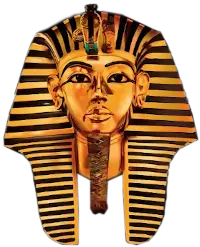
mention the creation of planets. Nevertheless, since it was the method of the Egyptian to conceal the truth by the use of myths, parables magical principles (primitive scientific method), number philosophy and hieroglyphics, we can easily see what methods might be involved before we could arrive at a better translation of the Memphite Theology.
At any rate, the entire setting of the Memphite Theology is astronomical, and what could be more natural, than to expect an astronomical interpretation? It seems well within reason, to regard the Ennead as the heliocentric system of history. Atom the sun God, creating eight other Gods or planets from his own body, as the Unmoved Mover a teaching which has been falsely attributed to Aristotle.
B. The identity between the Egyptian Sun God Atum (Atom) and the atom of Modern Science:
There are two things which I desire to point out in connexion with the relationship between Atum (Atom) the Egyptian Sun God and the atom of modern science. These things are (i) the similarity of attributes and (ii) the similarity of names. (i) The Egyptian God Atum (Atom) means self-created; everything and nothing; a combination of positive and negative principles:--all-inclusiveness and emptiness; a Demiurge, possessing creative powers; the Creator Sun. (p. 53, Frankfort's Intellectual Adventure of Ancient Man; p. 182, Frankfort's Kingship and the Gods).
Atum (Atom) also means "the all and the not yet Being"; (p. 168 Frankfort's Kingship of the Gods). As a God Atum (Atom) represents the principles of opposites. The atom, as the substratum of matter, according to Greek philosophy, is defined by Democritus as "movement of that which is" (To on) within "that which is not" (To me on). It therefore represents the principle of opposites, and shows the identity between the Egyptian Sun God and the substratum of matter. Furthermore, the atom is defined as "the full and void; being and not-being (Zeller's Hist. of Phil., p. 38) and these definitions
Topics
Greek Philospohy is Stolen Egyptian Philosophy
The Memphite Theology is the Basis of all Important Doctrines of Greek Philosophy
Greek Philosophy was Alien to the Greeks
Greek Philosophy was the offspring of the Egyptian Mystery System
The Egyptians Educated the Greeks
The Curriculum of the Egyptian Mystery System
The Pre-Socratic Philosophers and the teaching Ascribed to them
The Athenian Philosophers
1. Socrates
2. Plato
3. Aristotle